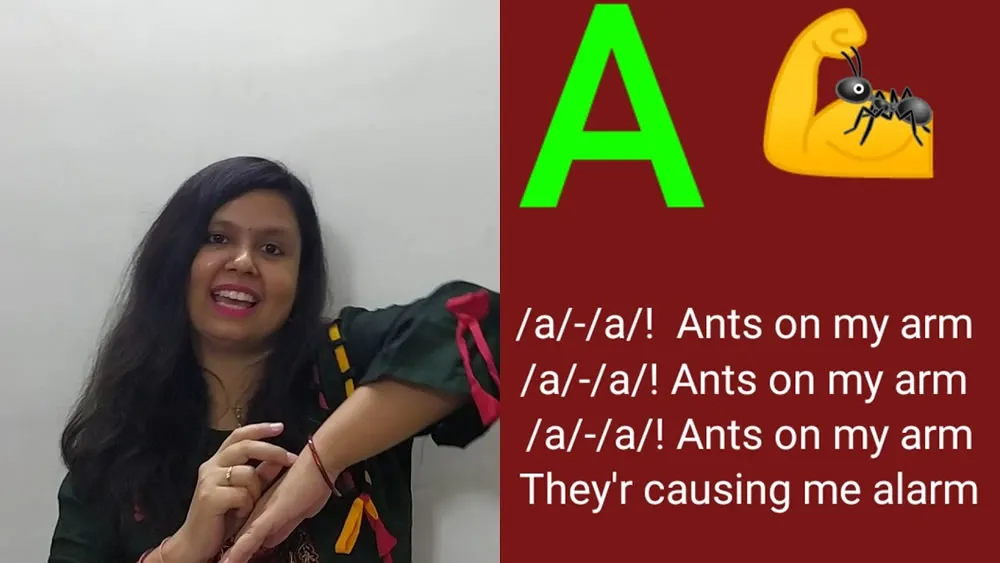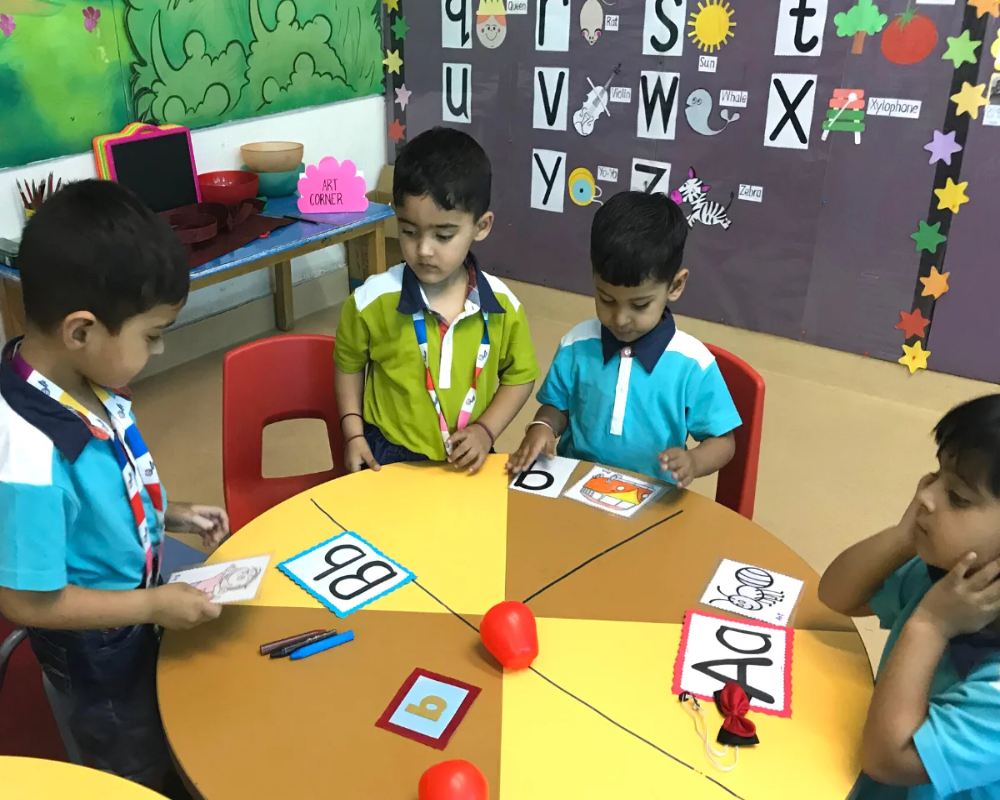Phonics Teacher Training Course in Mumbai

Source: dc29887
Phonics Teacher Training Course in Mumbai
Vidhyanidhi Education Society (VES) has become a brand name in recent times in providing Phonic Teacher Training Course Mumbai and at the same time all over the world.
As VES caters to Phonics Teacher Training Course via Offline as well as Online Study mode, so our reach is not limited to just Mumbai or India but one can pursue our courses sitting anywhere on the globe.
But wherever you are located VES believes in and conducts quality training without any compromises. It is not for nothing that our certificate phonics teachers’ training program is highly recommended.
Table of Content
- Why is Phonics Important?
- Career Scope for Phonics Teacher
- Phonics Online Training
- Phonics Course Syllabus
- Structure of Phonics Teachers Training Course
- Duration of Phonics Teacher Training Course in Mumbai
- Eligibility for Phonics Teachers Training Course
- Phonics Teacher Salary
- Phonics Course Fees
- How to teach CVC words to first graders?
- How to teach ee and ea sounds?
- How to teach phonics montessori?

Source: scholastic
Why is Phonics Important?
Phonics is an efficient approach to easily teach early pre-schoolers reading and spelling. Phonics teachers follow this method, to teach children the plausible letter sounds and then to mix those sounds to read correctly without any adult supervision from early age.
Phonics is Important because, it helps:
- avoid learning spellings by heart,
- build a stock of words,
- develop a reading habit,
- two grow a liking English,
- To reduce stress related to reading, writing and spelling.
- To do well in school.
And these are the very reasons why phonics teachers who have done Phonics Teacher Training Course in Mumbai are highly sought after by pre-schools and schools.
Career Scope for Phonics Teacher
Now, let me make you aware about the range and type of Career Scope for Phonics Teacher that can be built after completion of Phonics Teacher Training Course in Mumbai at VES:
- You can update your CV.
- You can jump start your own phonics classes for kids sitting at home with minimum investment and maximum earnings.
- You can start a full-time phonics centre, hobby, activity or enrichment centre.
- You can be appointed a phonics teacher in schools globally.
- You can get promoted as principal, centre-head, supervisor, coordinator or become eligible for an increment as an in-service teacher.
- You can be a shadow or remedial teacher.
- You can occupy posts of a phonics trainer, or a phonics curriculum planner or a phonics content maker.
- You can bring about development in your child’s English reading and spelling.
Phonics Online Training
Phonics Teacher Training Course in Mumbai can be undertaken via the online mode too! Wow! Isn’t this a great news! In the city of Mumbai commuting on a daily basis can be quite a challenge.
This hassle can be done away with by opting for our online Phonics Teacher Training Course in Mumbai. Same quality training, same certification, same experience minus the travel hassle.
Time – saving, energy – saving and money – saving too! Just go through the advantages of Phonics Online Training and decide to join now:
- All round the year admissions are available as there are back-to-back online batches conducted regularly.
- Absolutely reasonable fee with several payment options to be availed.
- A steady broadband internet connection is all that is required, no need to visit us at all.
- Certificate is couriered on home address.
- Comprehensive curriculum content.
- Study kit includes printable Teacher’s Handbook, printable +350 ready to use worksheets, printable +40 ready to use Flashcards, audios, videos and other teaching aids.
- Highly interactive online sessions.
- Ample revision, practice and on-spot doubt-solving.
- Competent trainers.
- Full admin support throughout training.
- Easy to attempt one-time assessment.
- Certification widely-accepted and recognized.
If you have questions about the course, you can reach out to us at these numbers: +919869546913 / +919869866277.
To get your copy of the brochure, please Click Here.

Source: phonicspower
Phonics Course Syllabus
The Phonics Course Syllabus of the Phonics Teacher Training Course in Mumbai brings out a fine equilibrium between theory and practice and contains the following chapters:
- Definition of Phonics
- Kinds of Phonic programmes
- Difference between Whole Language Approach and Phonics
- Letter sounds
- Letter Formation
- Blending
- Segmenting
- Beginning and ending consonant Blends
- Digraph sounds
- Difference between Digraphs and Blends.
- Tricky words.
- Phonics Rules
- Alternative Vowel Sounds and Spellings
Structure of Phonics Teachers Training Course
When you take admission for the Phonics Teacher Training Course in Mumbai, you will notice that we follow a very simplistic Structure of Phonics Teachers Training Course to keep your entire learning experience at VES relaxed and stress free.
- Get our reference either from social media, print media or via word-of-mouth
- Get in touch with us.
- Get all the details about the training course.
- Enroll at the earliest.
- Join the sessions.
- Appear for evaluation.
- Get certified.
See simple right!
Now, go on and get going!!
If you have questions about the course, you can reach out to us at these numbers: +919869546913 / +919869866277.
To get your copy of the brochure, please Click Here.
Duration of Phonics Teacher Training Course in Mumbai
It takes approximately 18 hours to complete the Phonics Teacher Training Course in Mumbai. And that’s about it – that’s exactly how quickly you can become a certified phonics educator and professional.
Eligibility for Phonics Teachers Training Course
- Whether you are an under-graduate or a graduate,
- whether you are a housewife or an office goer,
- whether you an aspiring teacher or an in-service teacher,
- whether you are parent or a to-be-parent,
- whether you want to start your own educational entrepreneurship or looking for a side-income.
If you have a satisfactory familiarity of the English language you are qualified to join the Phonics Teacher Training Course in Mumbai.
Phonics Teacher Salary
A phonics teacher who has completed the Phonics Teacher Training Course in Mumbai can earn a handsome 5-figure salary in reputed pre-schools or schools she joins. However, a lot depends upon the skills of the teacher, the experience she has, her past performance and also the paying capacity and the location of the school she joins.
Phonics Course Fees
The program fee for Phonics Teacher Training Course in Mumbai is quite cost-effective and suits almost every aspirant’s pocket. And the best part is one can pay the fee while availing many offers, discounts and convenient payment alternatives.
So, you should definitely enrol, now that you have read and know all of it!

Source: ytimg
How to teach CVC words to first graders?
Teaching CVC (Consonant-Vowel-Consonant) words to first graders is a foundational step in helping them become proficient readers.
CVC words are typically the first words children learn to sound out and read, so they serve as an essential building block in literacy education.
Below are some techniques and activities to help teach CVC words to first graders:
Direct Instruction
- Introduction to Phonics: Make sure students are familiar with individual letter sounds before combining them into CVC words.
- Word Families: Teach common word families like “-at”, “-an”, “-it”, etc., and show how changing the first letter can make a new word (e.g., “cat,” “bat,” “rat”).
- Blending Sounds: Explicitly model how to sound out each letter and blend them to read the word (e.g., c-a-t is “cat”).
- Spelling: Once students can read CVC words, move on to spelling. Use letter tiles or magnetic letters to physically move the letters into place.
- Worksheets and Flashcards: Use these for added practice. Show the word and then cover it, asking the student to spell it from memory.
Interactive Activities
- Word Building: Use magnetic letters or letter tiles and let students build CVC words on a board.
- Word Bingo: Create bingo cards with CVC words. Call out the word or show a picture, and students mark it on their cards.
- Matching Games: Make cards with pictures on one set and words on another. Students match the word to the picture.
- Word Hunt: Place CVC words around the room and ask students to find them. Once found, they can read them aloud or write them down.
- Interactive Worksheets: Use fill-in-the-blank or multiple-choice worksheets to help reinforce learning.
Multimedia Tools
- Educational Apps: There are many apps designed to teach phonics and CVC words through interactive games.
- Videos and Songs: Short clips and songs can help solidify the learning, especially for auditory and visual learners.
Reading and Writing Practice
- Guided Reading: Read CVC-heavy books together, helping students when they stumble upon a new word.
- Sentence Formation: Encourage students to write simple sentences using CVC words (e.g., “The cat sat.”)
Assessment and Reinforcement
- Quizzes: Use quizzes to evaluate how well the students can read or spell CVC words.
- Peer Activities: Pair stronger readers with those who need more help. Peer tutoring can be very effective.
- Review: Consistently review and reiterate lessons to reinforce learning.
- Positive Reinforcement: Use stickers, verbal praise, or small rewards to encourage students as they learn.
By combining these different techniques and activities, you can create a well-rounded approach to teaching CVC words to first graders.
If you have questions about the course, you can reach out to us at these numbers: +919869546913 / +919869866277.
To get your copy of the brochure, please Click Here.

Source: oakridge
How to teach ee and ea sounds?
Teaching the “ee” and “ea” sounds can be challenging because both letter combinations usually make the same sound (/i:/), as in “see” and “sea.” However, sometimes “ea” can make a different sound, as in “bread” or “steak.”
Here are some ways to teach these phonemes effectively:
Introduction
- Phonemic Awareness: Begin by isolating the sound /i:/ and familiarizing your students with it. Use audio examples or say it yourself.
- Visual Aids: Display both “ee” and “ea” on cards, boards, or interactive screens. Highlight or underline the letters.
- Sound-Symbol Association: Emphasize that both “ee” and “ea” can make the same sound. Show them examples like “see” and “sea,” or “tree” and “tea.”
Activities
- Word Sorts: Provide a list of words that contain “ee” and “ea.” Have students sort them into two columns based on their spelling.
- Memory Game: Create a memory game using cards with “ee” and “ea” words.
- Flashcards: Use flashcards with “ee” and “ea” words and ask students to read them out loud.
- Writing Sentences: Ask students to write sentences using new vocabulary words that have the “ee” and “ea” sounds.
- Find the Pair: Play a matching game where students have to match “ee” words with their “ea” counterparts that make the same sound (e.g., “see” and “sea”).
- Phoneme Substitution: Show students a word with either “ee” or “ea,” and ask them to change it to the other form, discussing whether or not it forms a valid word (e.g., “tea” to “tee”).
- Story Creation: Encourage them to create a short story that includes words from both categories.
- Worksheets: Prepare worksheets that include fill-in-the-blank, matching, or multiple-choice questions about “ee” and “ea” words.
Advanced Activities
- Exceptions: Discuss and practice the “ea” words that don’t make the /i:/ sound, like “bread,” “head,” and “steak.”
- Phonics Rules: As the students advance, introduce them to other rules of vowel pairs and how they can make various sounds.
- Dictionary Skills: Teach students how to look up words in a dictionary to identify their phonetic symbols.
Continuous Assessment
- Reading Aloud: Ask students to read passages that are rich in “ee” and “ea” words.
- Quizzes: Conduct periodic quizzes to assess retention and understanding.
- Spelling Tests: Include some “ee” and “ea” words in spelling tests.
Remember that repetition and practice are key in mastering any phonetic rule. With time and consistent practice, students will become proficient in differentiating and using “ee” and “ea” in their reading and writing.
How to teach phonics montessori?
The Montessori approach to education is child-centered and focuses on promoting the development of a child’s own initiative and natural abilities, especially through practical play.
When teaching phonics within the Montessori framework, you would look to engage children in multi-sensory, hands-on activities that make learning to read an enjoyable and interactive experience.
Below are some methods and activities that are often used in Montessori phonics instruction:
Sandpaper Letters
- Introduce the Sound: Before showing the letter, say the sound it makes.
- Trace and Say: Have the child trace the sandpaper letter with their fingers as they say the sound.
- Multiple Senses: The sandpaper letters engage both the sense of touch and sight, helping to imprint the letter and its sound in the child’s memory.
Movable Alphabet
- Sound Isolation: Use the movable alphabet to form words, emphasizing the sounds that each letter makes.
- Making Words: Encourage children to make their own words using the movable alphabet.
- Blending: Help children understand how individual sounds blend together to form words.
Object Matching
- Initial Sound: Place objects whose names start with the same letter sound in a basket.
- Matching: Ask the child to match each object with its corresponding sandpaper letter or movable alphabet letter.
Phonics Games
- I Spy: Play the game by saying, “I spy with my little eye something that begins with ‘s’.” The child would then identify an object in the room that starts with that sound.
- Sorting: Sort pictures or objects based on their initial, medial, or final sounds.
Picture Cards and Word Lists
- Phonetic Reading: Use cards with pictures and words to help children make the connection between the object and its phonetic spelling.
- Word Families: Introduce word lists that focus on a specific set of sounds or letter combinations.
Sequential Steps
- Single Sounds: Start with individual sounds before moving onto blends and digraphs.
- CVC Words: Teach Consonant-Vowel-Consonant words like ‘cat’, ‘bat’, etc., before moving to more complex words.
- Build Up: Gradually introduce more complex phonetic rules and exceptions.
Self-Correction
- Enable Independence: Provide tools and activities where children can check their own work, fostering independence and confidence.
Consistent Reinforcement
- Daily Practice: Consistent daily practice is key to solidifying the understanding of phonics.
- Integrate with Other Learning: Use phonics knowledge during other parts of the day, like reading time or even outdoor activities.
Remember, every child is different. The Montessori method values the individual learning pace and style of each child, so be prepared to adapt these activities according to each child’s needs.
Phonic Teacher Training Course Mumbai
Shape tomorrow’s readers today with Phonics Training at Vidhyanidhi!
If you have questions about the course, you can reach out to us at these numbers: +919869546913 / +919869866277.
To get your copy of the brochure, please Click Here.
FAQ
How to be a phonics teacher?
To be a phonics teacher, enroll in a certified Phonics Course offered by VES, gain practical experience, and pass any required assessments for certification.
How do you teach phonics in a fun way?
Make phonics fun by using games, interactive apps, and songs. Visual aids and props can also make the learning process more engaging for kids.
What is the phonic sound of i?
The phonic sound of 'i' can be short as in "sit" (/ɪ/) or long as in "like" (/aɪ/). The sound varies depending on the word and its context.




